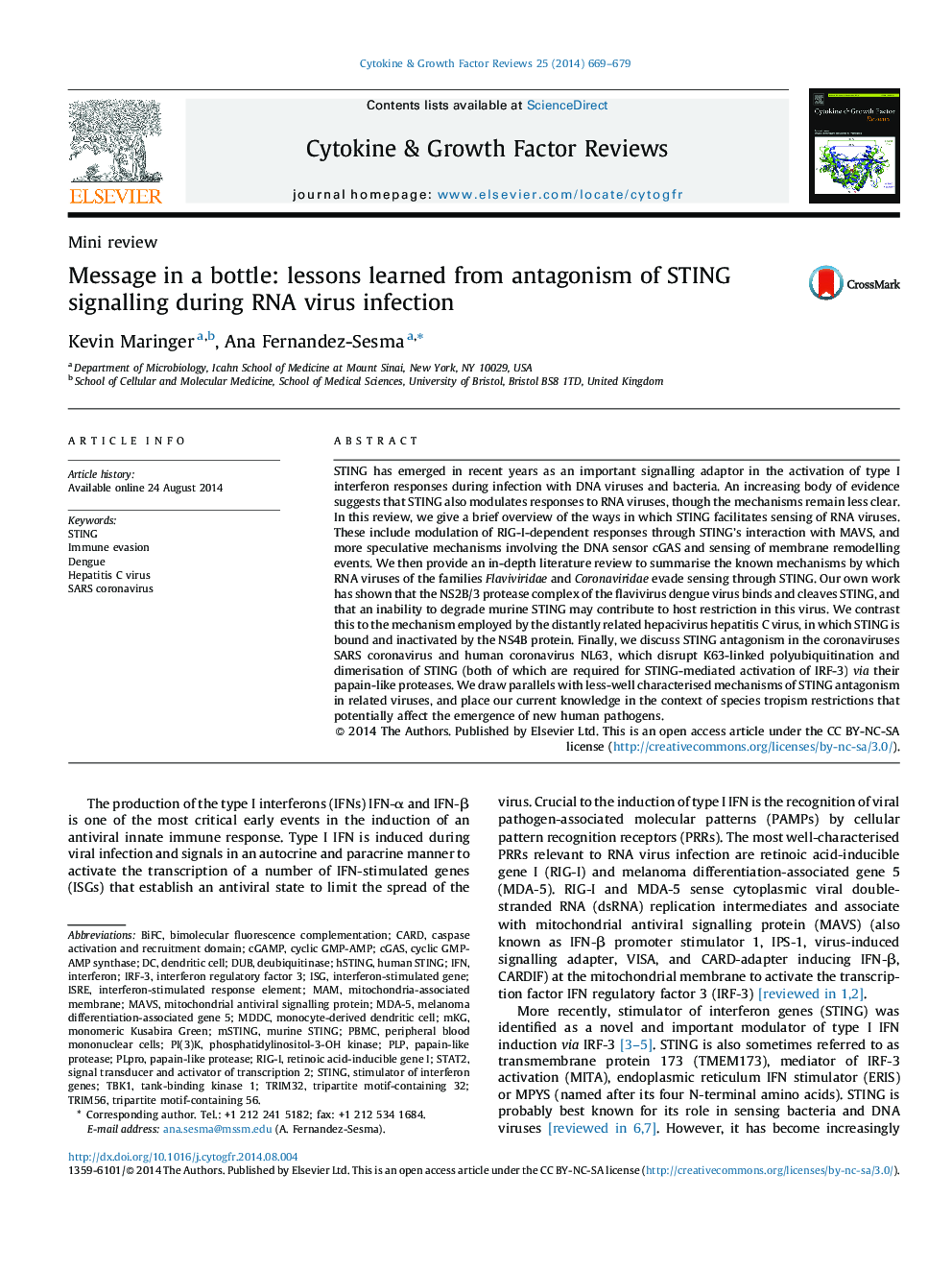| کد مقاله | کد نشریه | سال انتشار | مقاله انگلیسی | نسخه تمام متن |
|---|---|---|---|---|
| 10930084 | 1093378 | 2014 | 11 صفحه PDF | دانلود رایگان |
عنوان انگلیسی مقاله ISI
Message in a bottle: lessons learned from antagonism of STING signalling during RNA virus infection
دانلود مقاله + سفارش ترجمه
دانلود مقاله ISI انگلیسی
رایگان برای ایرانیان
کلمات کلیدی
cyclic GMP-AMPMAVSIRF-3MDDCDeubiquitinaseDUBISREcGAMPISGMDA-5cyclic GMP-AMP synthaseMAMBiFCCgasinterferon - اینترفرونIFN - اینترفرون هاbimolecular fluorescence complementation - تکمیل فلورسانس دو طرفه حرکتیDendritic cell - سلول دندریتیکMonocyte-derived dendritic cell - سلولهای دندانیایی مونوسیتInterferon regulatory factor 3 - عامل تنظیمی اینترفرون 3interferon-stimulated response element - عنصر پاسخ تحریک شده توسط اینترفرونmitochondria-associated membrane - غشای مرتبط با میتوکندریcaspase activation and recruitment domain - فعال سازی caspase و دامنه استخدامmelanoma differentiation-associated gene 5 - ژن 5 مرتبط با تمایز ملانوم 5interferon-stimulated gene - ژن تحریک شده توسط اینترفرونCARD - کارت
موضوعات مرتبط
علوم زیستی و بیوفناوری
بیوشیمی، ژنتیک و زیست شناسی مولکولی
بیولوژی سلول
پیش نمایش صفحه اول مقاله

چکیده انگلیسی
STING has emerged in recent years as an important signalling adaptor in the activation of type I interferon responses during infection with DNA viruses and bacteria. An increasing body of evidence suggests that STING also modulates responses to RNA viruses, though the mechanisms remain less clear. In this review, we give a brief overview of the ways in which STING facilitates sensing of RNA viruses. These include modulation of RIG-I-dependent responses through STING's interaction with MAVS, and more speculative mechanisms involving the DNA sensor cGAS and sensing of membrane remodelling events. We then provide an in-depth literature review to summarise the known mechanisms by which RNA viruses of the families Flaviviridae and Coronaviridae evade sensing through STING. Our own work has shown that the NS2B/3 protease complex of the flavivirus dengue virus binds and cleaves STING, and that an inability to degrade murine STING may contribute to host restriction in this virus. We contrast this to the mechanism employed by the distantly related hepacivirus hepatitis C virus, in which STING is bound and inactivated by the NS4B protein. Finally, we discuss STING antagonism in the coronaviruses SARS coronavirus and human coronavirus NL63, which disrupt K63-linked polyubiquitination and dimerisation of STING (both of which are required for STING-mediated activation of IRF-3) via their papain-like proteases. We draw parallels with less-well characterised mechanisms of STING antagonism in related viruses, and place our current knowledge in the context of species tropism restrictions that potentially affect the emergence of new human pathogens.
ناشر
Database: Elsevier - ScienceDirect (ساینس دایرکت)
Journal: Cytokine & Growth Factor Reviews - Volume 25, Issue 6, December 2014, Pages 669-679
Journal: Cytokine & Growth Factor Reviews - Volume 25, Issue 6, December 2014, Pages 669-679
نویسندگان
Kevin Maringer, Ana Fernandez-Sesma,